We took a look at 10 major LGBTQ+ artists who have helped define the landscape of contemporary art, whose work engages with themes of identity politics, sexuality, gender and race….
The art market has changed substantially over the past years. From competing with digital art and NFTs to the belated race to build stronger online presences, art market players were forced to reckon with their lack of participation in the progress of the 21st century, especially with the onset of the pandemic. But the changes that artists, collectors, and institutions are faced with took root way before this decade and concern not only art that is being currently created, but also individuals and works that came into being over the past 100 years. The undervaluation of minority groups is one of the strongest factors that has been driving prices – and LGBTQ+ artists certainly belong to that segment. Here are some of the most important figures who have shaped the LGBTQ+ art space over the past decades and today.

David Hockney is one of the most celebrated and established LGBTQ+ artists still working today. A mainstay of the British mainstream, Hockney has long been recognized for his playful, pop-primitivist works, combining cubism with a cartoonish flair to create tender depictions of queer domestic life. With no signs of slowing down, Hockney is undergoing a late-career renaissance, and continues to put out exciting new work year after year.
When Hockney started out as an artist, homosexuality was still illegal in both the United States and his native Britain. Nonetheless, the pioneering artist set about depicting the gentle and intimate sides of gay love, from the very early moments of his long career. We Two Boys Together Clinging, 1961, is an abstract and delicate love letter to gay intimacy and queer experience. Since those early days, he has never shied away from depicting the male form, and has watched (and responded) as societal perceptions of homosexuality shift all around him. In his portrait in 16mm film, Portraits (2016), taken by the artist Tacita Dean, the 80 year old artist sits in front of camera and smokes five cigarettes. In the accompanying text he remarks: “It used to be you couldn’t be gay. Now you can be gay but you can’t smoke. There’s always something.”
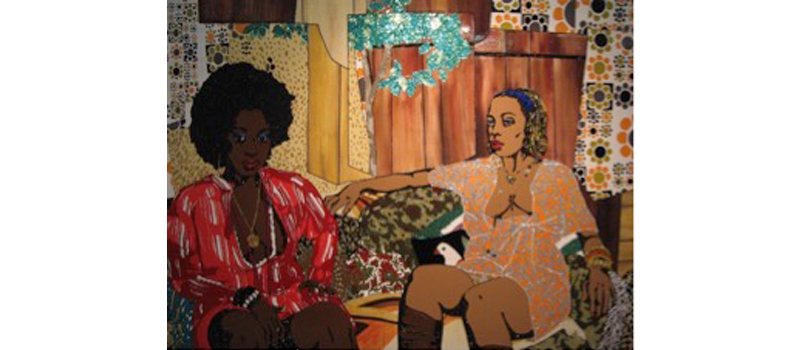
Mickalene Thomas is a African-American contemporary artist based in New York, who is well known for her complex paintings, made from extravagant combinations of rhinestones, acrylic, and enamel. Drawing on Western art history, pop art, and visual culture, Thomas examines and exposes conceptions of femininity, beauty, race, sexuality, and gender. Her work has often been praised for its honest and unique representation of same-sex desires from a female perspective, as well its considered documentation of significant moments in African American history and culture.
One of today’s leading LGBTQ+ artists, Thomas has made waves in the art world in part due to her capacity to possess and re-interpret the legacy of Dadaism as a black lesbian woman. Thomas’ work mixes elements of abstraction and collage alongside a fascination with textiles and texture; opulent fabrics, glitter, diamantes and colorful paint surround and enmesh the subjects of her work. Combining these unlikely elements in excess, Thomas revels in the splendor of profligacy, using her art to suggest that materiality has an irreducible place in the creation and re-configuration of identity.
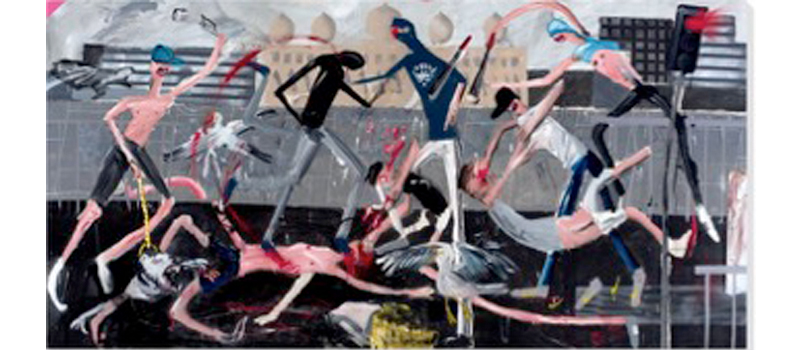
An exciting young voice in the British scene, Dale Lewis began his career as an assistant to Damien Hirst, and later to Raqib Shaw. For seven years he worked painstakingly under these artists, placing thousands of tiny butterfly wings onto paint for Hirst, and working in microscopic detail on photorealist paintings for Shaw. Having carved out his own niche, the London-based artist has moved away from working in miniature, preferring to paint vast works, often two by four meters wide, which he completes in a single day.
Lewis’ style bears echoes of David Hockney and Jean-Michel Basquiat – his satirical and markedly British paintings are executed in oil, acrylic, and spray paint on canvas, depicting scenes that sit somewhere between the surreal and the mundane. Mostly populated by spindly, white British males, Lewis’ bold paintings show carnivalesque scenes of boys dressed in Adidas trainers basking at the seaside, baroque gay orgies, birthday parties, whacked out funerals, and men engaging in gang violence. Beneath the subversive humour and startling compositional complexity of Lewis’ work lies a deep-rooted search for British identity.
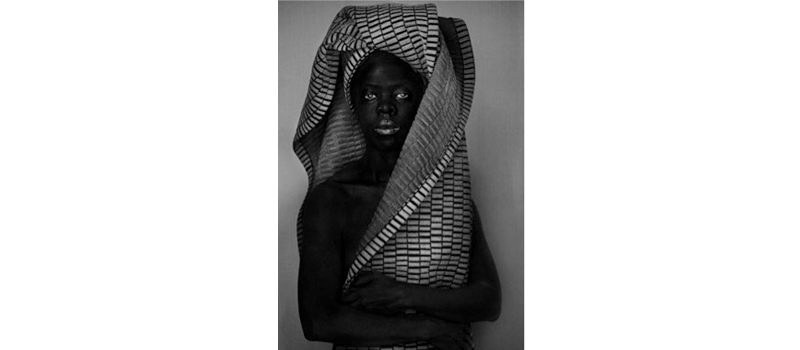
The South African photographer Zanele Muholi is a self described “visual activist,” whose work focuses primarily on the black female body and its historical representation in documentary film. Fighting back against the social inequality in post-Apartheid South Africa, Muholi uses her arresting queer portrait photography to give visibility to the nation’s attacked LGBTQ+ population. She is also the co-founder of the Forum for the Empowerment of Women (FEW), a black lesbian organization based in Gauteng and Inkanyisa, a platform for queer and visual activism.
In a country where honor killings and “corrective rapes” against lesbians are a lived threat, Muholi has to deal with the reality that many of the women she’s photographed have been killed. “The risk we take is on a daily basis,” Muholi told The Guardian, “just living, and thinking what might happen, not only to you but also your fellow activists and friends who are living their lives.”
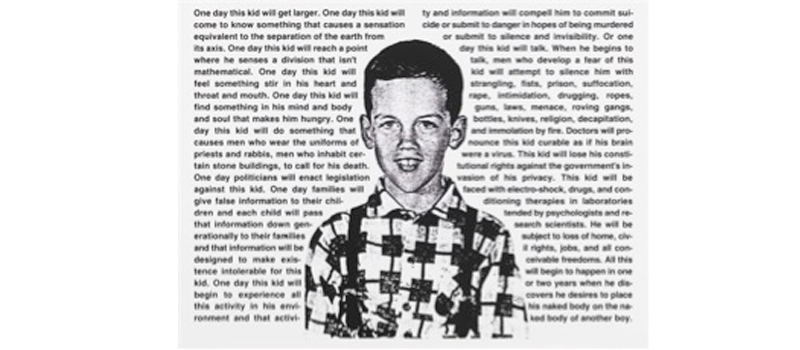
David Wojnarowicz was a painter, photographer, and performance artist who incorporated personal narratives and experiences from his own life (and from those around him) into his work in order to create alternative histories and visions of society. A highly political and deeply personal artist, Wojnarowicz lived through the ‘80s AIDS epidemic, which he responded to often in his work, notably with his video piece “Fire in my Belly.” Wojnarowicz pushed the boundaries of queer aesthetics, combining the sexually explicit with the politically conscious, wielding an incisive comic wit. His work continued to explore his struggle with AIDS until he died from complications of the disease in 1992.
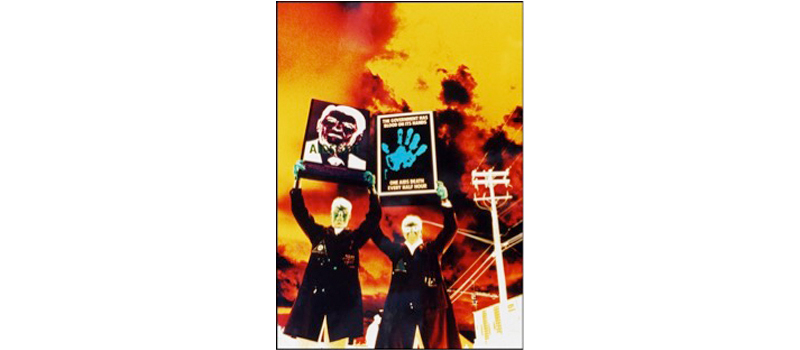
Lola Flash is a celebrated New York-based visual artist who, in her own words, “uses photography to challenge stereotypes and offer new ways of seeing that transcend and interrogate gender, sexual, and racial norms.” Having documented the ever-changing landscapes of queer culture for over 30 years, her portraiture includes photographs of queer avant-garde trailblazers, demure older women, and trans people going about their daily lives. Flash started out in the 1980s, capturing anti-Reagan AIDS protests on film in New York. Always happy to interrogate queer culture itself, Flash’s work probes deeper. Her images of anti-Reagan protests in fact offer a critique of cis white gay men who fail to acknowledge the privilege inherent in both their gender and skin color, and thus prohibit the creation of a truly inclusive LGBTQ+ community. Her acid-like negative photograph “K,” 1989, depicts two muscular white men in tight underwear and Ku Klux Klan masks – a clear indication of her desire to challenge normalized and oppressive conceptions of gender, identity, and race from every angle.
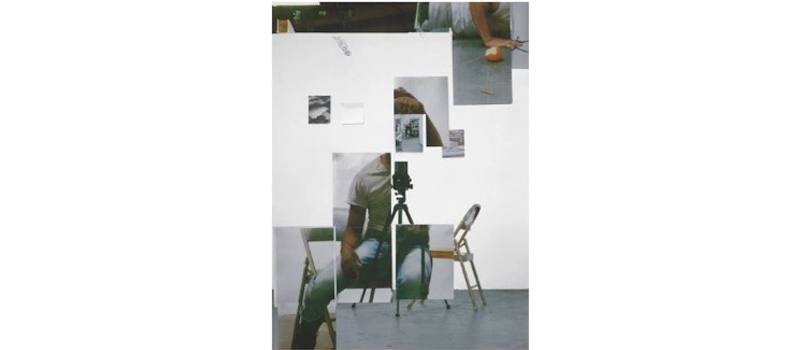
Paul Mpagi Sepuya is a portrait photographer whose work reveals his subjects in tantalizing fragments: torsos, arms, legs, or feet – never the whole body. Through leaving something out, Sepuya challenges the relationship between photographer and sitter, creating a feeling of longing and wanting more. Often, his photographs are torn apart and rearranged with tape, allowing for a deep immersion into queer culture, as well conceptions of social and sexual exchange.
What makes Sepuya’s work so singular is his careful investigation of gaze and sensuality. Sepuya’s photos often seek to remind us of some important yet uncomfortable truths concerning photography’s historical predilection for mangling (in particular, black) queer bodies. Through ripping his subjects into fragments, and reassembling them himself, Sepuya imbues his portraits with power.

Well known for her work in fashion, K8 Hardy is a diverse multimedia artist – her photographs, performance pieces, and sculptures explore a variety of issues, from class, to race and gender. Hardy often incorporates herself as the subject of her own photographs, subverting the traditional hegemonic practice of male artists objectifying female bodies. In 2007, Hardy collaborated with queer feminist performance artist Wynne Greenwood on a performance piece at Tate Modern. The two artists wore berets and turtlenecks, adopting alternate identities as co-hosts of the fictional news station, WKRH, where they reported on fake news such as bra burning, and interviewed a friend who was suffering from anxiety. The press release for the exhibition, titled New Report, noted: “If the revolution will be televised today it is only by queering TV in order to encounter the desires of the subjects and histories it addresses.”
K8 Hardy is also a founding member of the queer feminist journal and artist collective LTTR, and has directed music videos for bands such as Le Tigre, Lesbians on Ecstasy, and Men. Some of her work is permanently housed at the Whitney Museum of American Art.
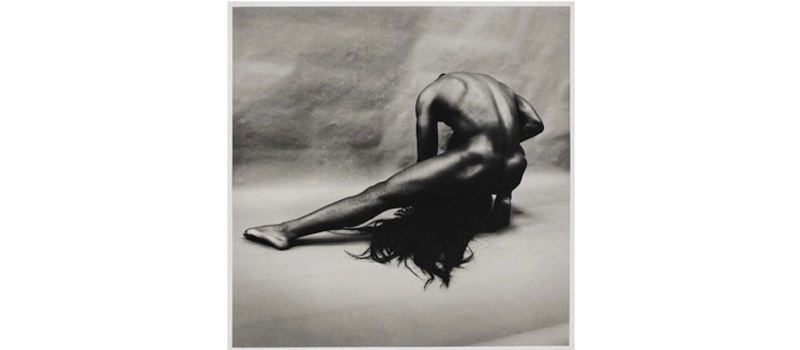
Rotimi Fani-Kayode was a Nigerian-born photographer, who moved to Britain as a child to escape the Nigerian Civil War, and later studied in the United States. His stylized photographic portraits address themes of colonialism, sexuality, and race; in particular the internal tensions between his own homosexual identity and Yoruba upbringing. Indeed, Fani-Kayode described himself as an outsider three times over: “On matters of sexuality; in terms of geographical and cultural dislocation; and in the sense of not having become the sort of respectably married professional my parents might have hoped for.”
Fani-Kayode was also a prominent voice in the artistic discourse around HIV and AIDS throughout the 1980s, until he died in 1989 from a heart attack which he suffered whilst recovering from an AIDS related illness. Not only has the artist been praised for his provoking imagery of Africanness and queerness, he is also revered for his ability to explore racial and sexual politics through the lens of religious eroticism and beauty. Despite the complexity of their themes, his images often evoke a sense of fleeting beauty. In Bronze Head, 1987, Fani-Kayode acts as both artist and sitter – he is the one who both controls and frames this complex representation of his own identity, in an act that can be interpreted as evocatively sexual, or a surreal depiction of male childbirth.
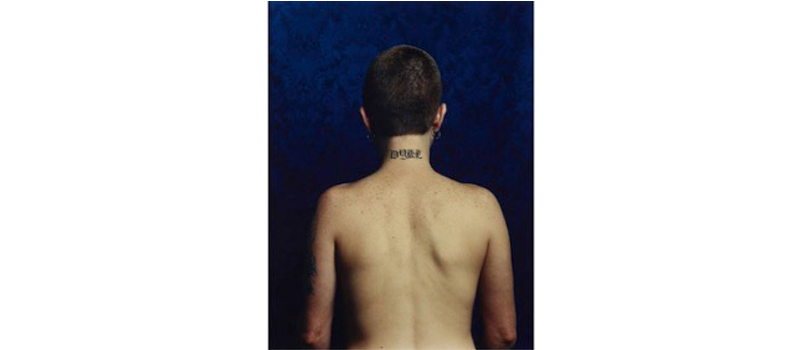
Catherine Opie is an LGBTQ+ artist whose groundbreaking fine-art photography examines American identity through reimagining national/local iconography, and redefining landscapes. Opie has captured members of the American LGBTQ+ community, such as the Los Angeles Leather Dyke community, through her documentary photography projects. Her work often combines esoteric references to art history, with socio-political commentary, drawing inspiration from the transgressive photography of Robert Mapplethorpe and Nan Goldin. The subjects of her work range from local football teams, to studies of master-plan communities, to S&M erotica created for lesbian owned sex magazines.
You can find more information, artists, auctions, exhibitions, and current trends at MutualArt.com.

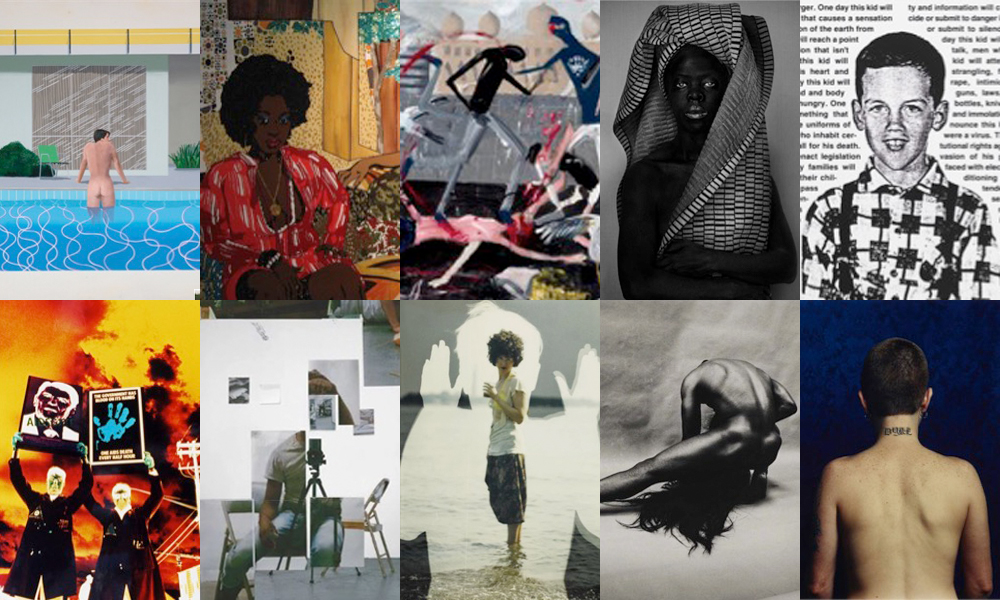

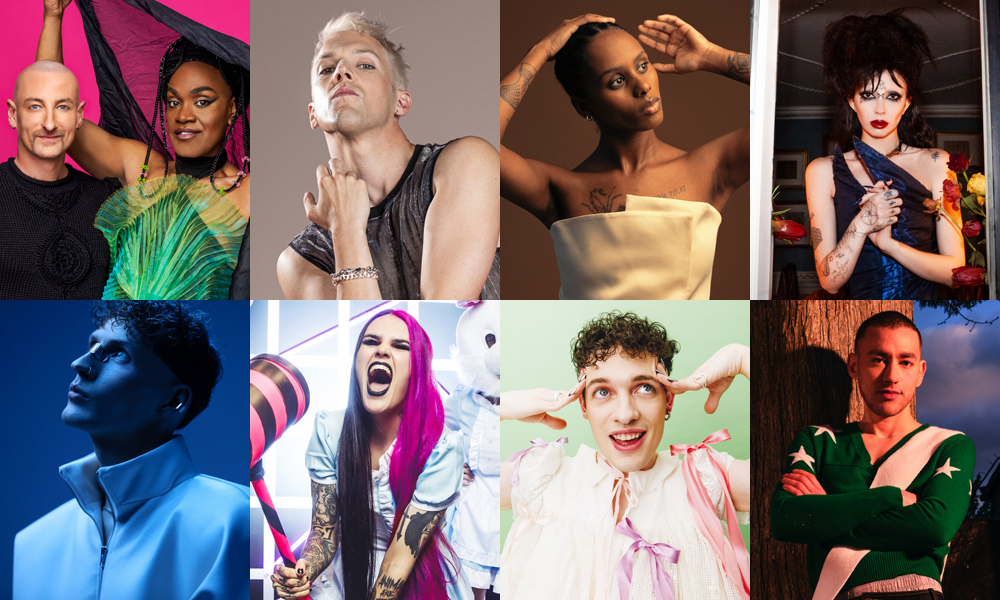
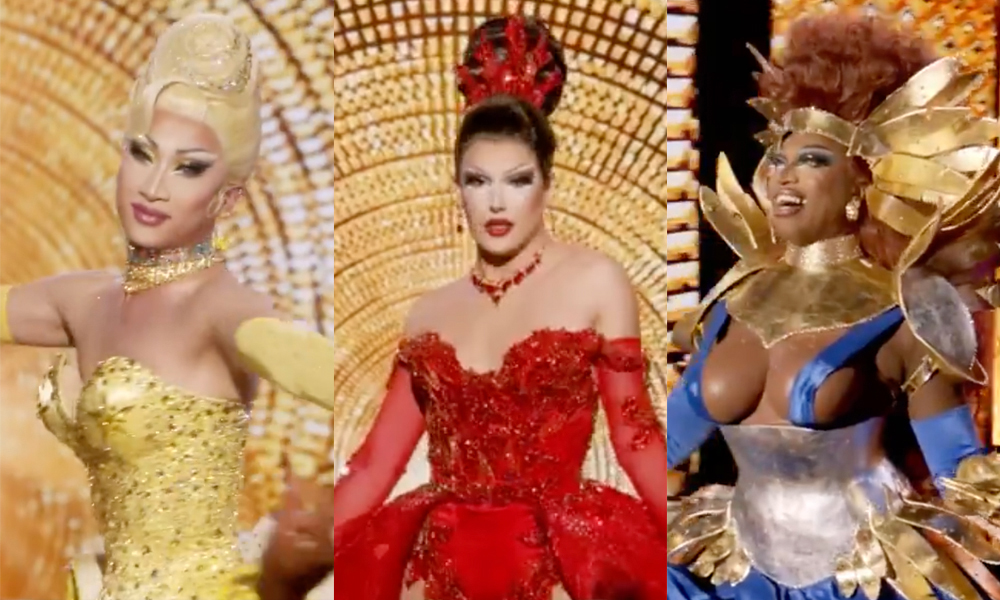

POST A COMMENT